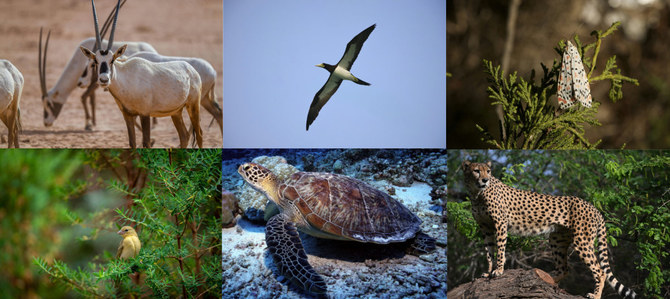
- ARAB NEWS
- 05 Jul 2025

World Wildlife Day, marked every year on March 3, is an opportunity to celebrate the world’s great diversity of animal and plant life. But such appreciation of the natural world was not always so widespread.
The term “wildlife” is relatively new in the English language. It was first used 150 years ago during a time of European colonial expansion across Africa. The colonial governments viewed the natural world, in today’s economic parlance, as capital to be exploited.
The colonial governments divided the natural world into “wildlife” and “forests.” Wildlife consisted primarily of large mammals to be hunted and killed, often for trophies. Forests, on the other hand, were to be exploited primarily for timber.
Wildlife became a more widely used term in the 1980s at a point in history when trophy hunting was declining and non-consumptive uses — such as wildlife photography and ecotourism — were on the rise.
This shift away from a purely utilitarian and anthropocentric perspective came as people increasingly recognized there was more to the natural world than large, charismatic and collectible mammals for hunting and towering trees to be harvested for timber.
The term biodiversity, popularized by the American academic E.O. Wilson in 1985, also began to enter common usage, as it better reflected the interconnectedness of the natural world rather than viewing species in isolation.
Through the NCW and the Saudi Green Initiative, Saudi Arabia has committed to protecting 30 percent of the Kingdom’s marine and land habitats by 2030.
Stuart Williams
The evolution of these perspectives on the natural world has informed the approach of Saudi Arabia’s National Center for Wildlife, which performs cutting edge work in the protected conservation areas of the Kingdom.
Saudi Arabia is home to a wealth of unique and fascinating plant and animal species, from terrestrial animals like gazelle, ibex, oryx, and the iconic Arabian leopard to vulnerable marine creatures as diverse as corals and the endangered dugong.
There has long been a rich tradition on the Arabian Peninsula of protecting the environment and working with nature in a sustainable way, including the traditional practices of preserving natural resources in “himas,” or reserved pasture.
These traditions now form the foundations upon which the Kingdom has built today’s protected areas.
Through the National Center for Wildlife and the Saudi Green Initiative, Saudi Arabia has committed to protecting 30 percent of the Kingdom’s marine and land habitats by 2030.
Significant strides have already been made, but there is still a long way to go in protecting the Kingdom’s flora and fauna. Through education and public awareness campaigns, NCW aims to draw on the support of the entire Kingdom.
In the meantime, March 3 is an opportunity to celebrate wildlife, biodiversity, and the natural world.